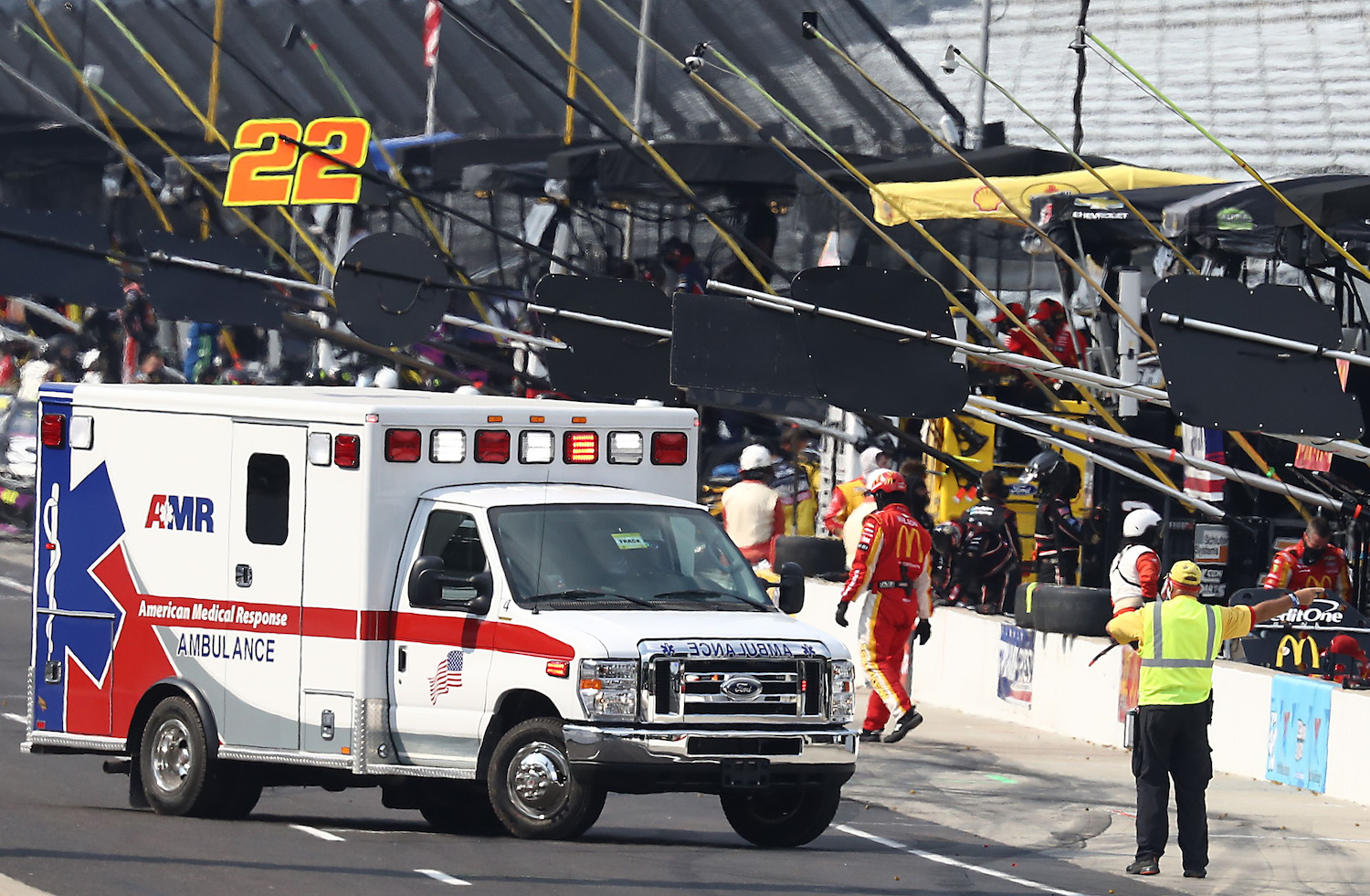NASCAR
NASCAR’s Gruesome Death on Pit Road Shocked the Television Audience and Dramatically Changed the Rules for Safety

While NASCAR is known for the inherent dangers faced by the drivers, fans often lose sight of the high-risk environment pit crew members must navigate on a NASCAR pit road. Unlike the drivers, who are enveloped by a cocoon of safety, including a roll cage and a high-tech harness system, pit crew members try to stay safe by relying on a helmet, a flame-retardant suit, and a head on a swivel.
Although today’s pit crew members must still contend with a variety of hazards as a part of their jobs, they are much better protected than they were just 30 years ago. Unfortunately, the additional safety precautions were born from tragedy when one pit crew member for Bill Elliott‘s team lost his life. Here’s a look back at that tragic day and how it changed NASCAR forever.
Bill Elliott’s NASCAR team involved in 1987 pit road accident
RELATED: Dale Earnhardt’s Gruesome Death and How It Changed NASCAR Forever
Near the end of the 1987 NASCAR Cup Series season on the road course at Riverside, Bill Elliott’s crew was in the middle of a pit stop when Michael Waltrip and Jim Robinson made contact on pit road. Waltrip’s car slid into Elliott’s car, knocking it off the jack and injuring three pit crew members.
Chuck Hill suffered massive injuries after the car came down on him. He would spend weeks recovering in a California hospital. With Hill out of commission, the team held a tryout at the shop to find a new right rear tire changer for the 1988 season.
Out of numerous candidates, a cowboy boots-wearing Mike Rich won the job.
Bill Elliott team involved in fatal accident
RELATED: NASCAR Veteran Morgan Shepherd in Most Challenging Fight of His Life
During the 1988 season, Mike Rich was the right rear tire changer for a Bill Elliott team that won six times and, more impressively, captured the season series championship. In 1989, Elliott endured injuries early in the season but still managed to finish sixth in the points.
In 1990, the team had 12 top-five finishes, but victory remained elusive as it won its first and only race of the year at Dover in September. Several weeks later at the Cup Series season finale in Atlanta, Bill Elliott appeared to have the best car of the day, leading 94 of the 328 laps of the Atlanta Journal 500.
With just over 30 laps remaining, the caution flag came out. In the front of the pack, Bill Elliott darted down pit road, the television cameras trained on him as he pitted. What happened next, the cameras captured, and the national television audience at home watched in horror.
Mike Rich and the rest of Elliott’s pit crew went to work on the lead car. The second-place car of Ricky Rudd approached from behind headed toward its stall, located directly in front of Elliott’s. As Rudd attempted to brake, the rear wheels of his Chevrolet locked up, sending his car spinning out of control straight toward Elliott’s car.
NASCAR implements pit road changes following death
Tommy Cole, Bill Elliott’s jack man, was hit and sent flying. He suffered a broken arm and spent the night in the hospital. Mike Rich, however, never had a chance. He was pinned between the two cars and suffered head and chest injuries. He was airlifted to a nearby hospital and underwent surgery but died hours later.
Rich’s death was a wake-up call to NASCAR, which had experienced a similar pit road fatality at Atlanta 11 years earlier. The racing organization implemented significant changes the following year. One of the most important was the introduction of a pit road speed limit. Interestingly, all the other motorsports, including F1 and IndyCar, followed suit.
While the implementation of a speed limit was a huge improvement for the safety of pit crew members, NASCAR has instituted additional protocols through the years. Team members are now restricted to when they can go over the wall and are required to secure mechanical equipment, and all members must wear helmets.
Mike Rich got his job because of an accident on pit road. He lost his life several years later in another accident at age 32. His death, however, did not happen in vain. It changed NASCAR’s mindset toward the safety of pit crews and, as a result, has prevented further catastrophic accidents and deaths from happening.











